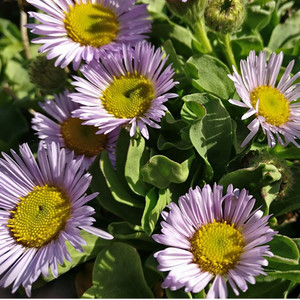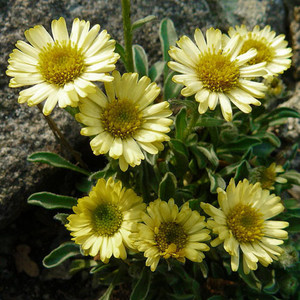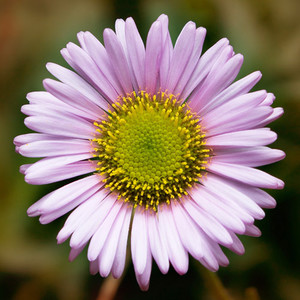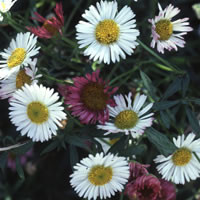-
Nothing here. Please add something or load your cart
-
ERIGERON ALPINUS 'MAUVETTE '
Only recently developed from a chance seedling, this gorgeous, exceptionally dwarf, bone-hardy alpine has golden-eyed bright mauve, rather than pinkish daisy flowers. These burst open from late spring to early summer, above a slow-growing, semi-evergreen cushion, making it a perfect butterfly and bee plant, ideal for rockery, border or even a container! ... Learn More$3.92
-
ERIGERON AUREUS
One of the more delightful members of the daisy tribe, this lovely plant, forming compact rosettes, should be planted into a very well-drained crevice or scree, when it will produce an almost endless supply of bright buttermilk-yellow flowers for a very long time, even into early winter. The modern cultivar "Canary Bird" was developed from this species. We supply good, but admittedly very few cleaned seeds. ... Learn More$3.92
(10 seeds)
-
ERIGERON BOREALIS
Spathulate leaves make a compact clump and also clad the short stems which bear mauve-rayed flowers with large golden eyes. This lovely alpine is also one of Britain's rarest native flowers and can only be found on a very few mountain tops including Ben Lawers in central Scotland. ... Learn More$3.92
(10 seeds)
-
ERIGERON COMPOSITUS
A most attractive alpine with rosettes of finely-divided, hairy leaves and close-packed stems of golden-eyed white flowers, with some rare seedlings being pale pink or blue. It is native to barren places in western North America, Greenland and eastern Canada. ... Learn More$4.39
(20 seeds)
-
ERIGERON GLAUCUS
This trouble-free hardy plant thrives on the coastline of Oregon and California where it makes slowly spreading, compact cushions on beaches, coastal bluffs and dunes. The central golden-yellow disc florets are surrounded by petals which can vary from deep blue and purple to nearly white, but are usually pinkish mauve. It is a valuable, extremely-easy-to-grow rock garden plant. ... Learn More$3.44
(20+ seeds)
-
ERIGERON KARVINSKIANUS
On a gently spreading low carpet of tiny pointed leaves, appear sheets of dazzling daisies, which open white before turning pink and finally fading to deep purple. This gorgeous, drought-resistant cushion plant is very long-flowering, from late spring to autumn, and is one of the best wall or dry-rockery plants, able to stand almost complete dessication without dying. (RHS Award of Merit!) ... Learn More$3.97
(50+ seeds)







